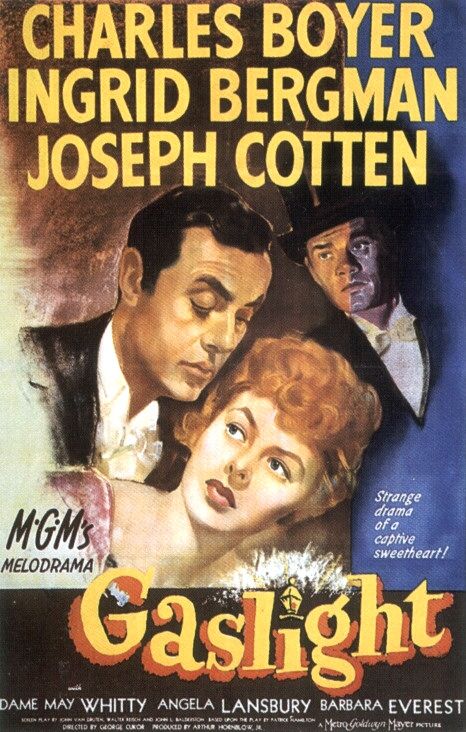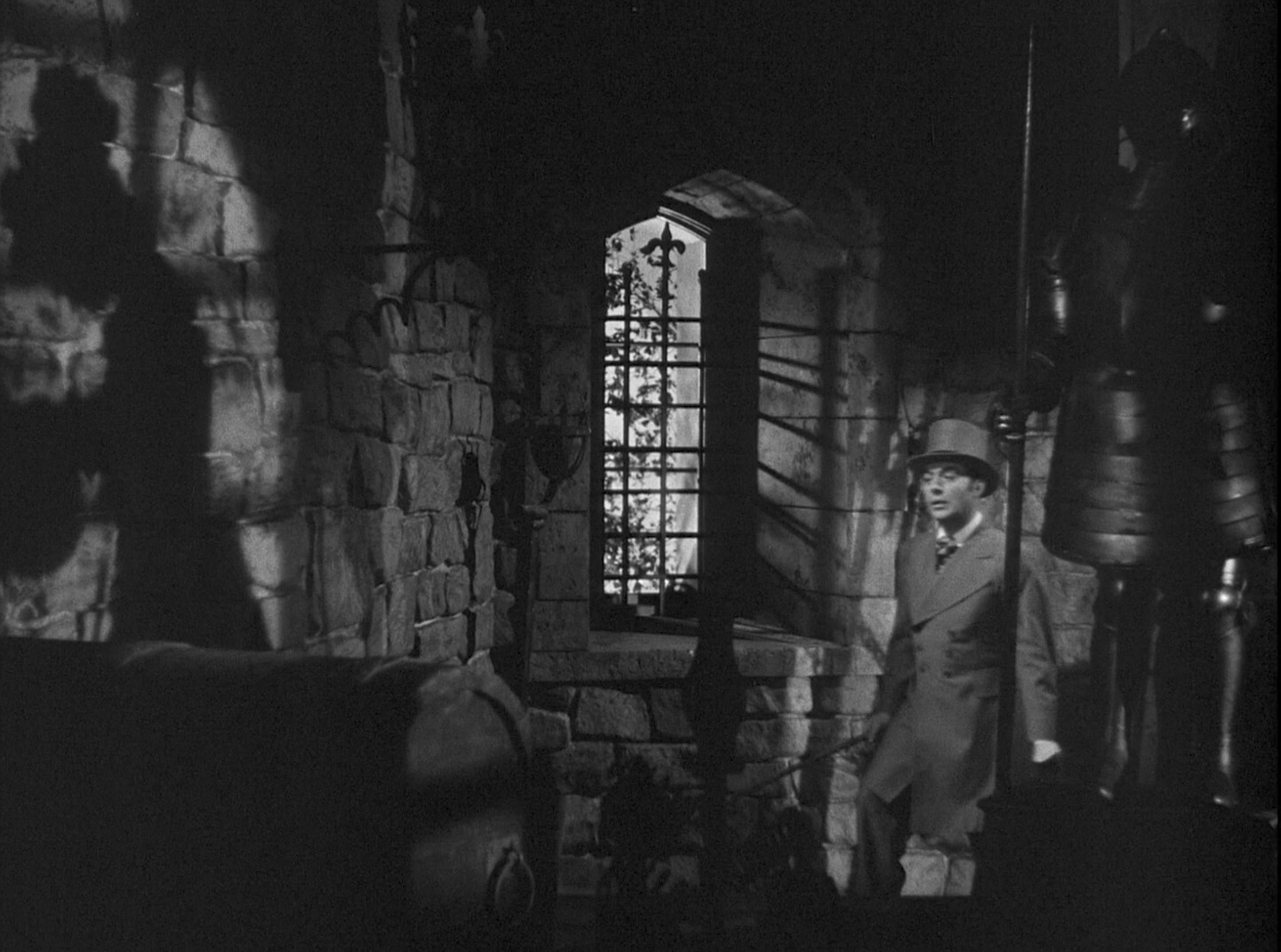The Furniture: The Gas Lighting of Gaslighting in Gaslight
 Monday, October 9, 2017 at 5:00PM
Monday, October 9, 2017 at 5:00PM
"The Furniture," by Daniel Walber, is our weekly series on Production Design. You can click on the images to see them in magnified detail.

This week I’d like to talk about gas lighting. That’s in addition to gaslighting, which is obviously related. Basically, I’d like to talk about the way that Gaslight (1944) uses gas lighting to distill the concept of gaslighting. It was so effective that “gaslighting” stuck, and has remained a popularly understood concept nearly 75 years after the film debuted.
Of course, these days the term has been almost completely divorced from memory of the original play or its various adaptations. The 1944 version is mostly remembered for winning Ingrid Bergman her first Oscar, and deservedly so. Her performance is astonishing, newly powerful with each successive viewing.
However, the film did win a second Oscar. Not for director George Cukor, who wasn’t even nominated. Nor for cinematographer Joseph Ruttenberg, who lost to Joseph LaShelle’s work on Laura...
Gaslight’s second Oscar went to its design team, art directors Cedric Gibbons and William Ferrari and set decorators Edwin B. Willis and Paul Huldchinsky.
We may usually think of shadows and light as the domain of the cinematographer, but there’s much more that goes into an image. The look of a film is always the product of collaboration between artists. In Gaslight, the lighting of the set is no more or less important than the lighting in the set.
The film begins with a quick, almost vague impression of an initial trauma. The first thing we see are the streetlights, surrounded by a heavy darkness. Alice Alquist, a world-famous opera singer, is murdered in her London home. Her niece, Paula (Bergman), is sent away to a friend of her aunt’s in Italy.
Then the film leaps forward to the end of her studies and her abrupt marriage to Gregory Anton (Charles Boyer), a creep. Their honeymoon on Lake Como is utterly ridiculous, a suspicious fantasy en plein air before the dank misery and abuse to follow.
On Gregory’s request, they move back to Alice’s London house. He proceeds to systematically destroy Paula’s psychological well-being, taking terrible advantage of this preserved locus of trauma.
But it’s the specific, highly-plotted reason for his cruel deceptions that make Gaslight so iconic. He needs to get into the attic without Paula knowing, so he can search for her aunt’s jewels. However, gas lighting works in such a way that she’ll know from the dimming of the lights in her bedroom that someone is in the attic. That and the sounds of someone rummaging above. So he makes her doubt her senses, severing her ties to reality.
As you’ll notice in the picture, only one of the four lights in the fixture is illuminated in the first place. This is true throughout the film. It lends an eerie incompleteness to the spaces, as well as a subtle metaphor of how completely Gregory keeps Paula in the dark.
The other important piece is that these lights signify a constricting temporality as well. In the late 1930s, when the original play was written, gas lighting was already gone. This story could only take place in Victorian London. Moreover, the light fixtures themselves capture an even more specific time. This is before the arrival of the Arts and Crafts movement, a fad that introduced floral and folk designs into more sober Victorian homes. Gaslight features much more stern lamps, hanging fixtures that marry elegance with a sinister sort of restraint.
Between the streetlights outside and the fixtures within, the mood is forever dimmed. The heaviness of the atmosphere brings us even closer to Paula’s mental state, trapping us with her. The detail is so precise, so committed that every flicker crawls under the skin, projecting terrible uncertainty and fear to the audience.











Reader Comments (4)
I adore this movie, despite historians being less than kind. But the performances by Bergman, Boyer and first timer Lansbury are remarkable. And the intricate art direction is also a true star here. It's fairly hypnotic. And that ending. Yes.
Congratulations, Daniel. The movie is excellent and so is your text. Thanks.
As a critic wrote "Gaslight is a delight..."
Ingrid Bergman's first passage in Hollywood is phenomenal: Casablanca, For Whom The Bell Tolls, Spellbound, Notorious... Her "economic", "subtle" and "natural" style of acting makes some acclaimed actresses of today sound exaggerated and is certainly one of the reasons of her
perennity. One of the most adored actresses of all times. The director, George Cukor, is one of the most unfairly treated. Because he never was an "author" like Wilder or Hitchcock, but a talent working for the producers and the studios. A great talent that gave five leading Oscars for his actors, one of them to Bergman here.
Love this movie and the sets are a very particular reason why. I love this era of time as portrayed in this era of cinema.